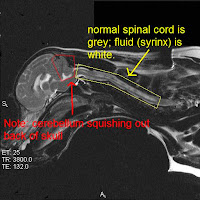Fox hunting was banned in England and Wales in 2005 under the Hunting Act (2004) after already being banned in Scotland in 2002. Fox hunting first came around in the 1600s and was originally used as 'pest-control' to help reduce the number of livestock being killed by foxes. It is now considered by some as a traditional sport, although there was a time when bear and bull baiting were as well. According to the RSPCA, 70-80% of UK residents support the ban, however, a YouGov poll in 2015 suggested that only 51% did.
The Hunting Act 2004
Originally the ban was thought to be a simple and inexpensive way for politicians to gain popularity. However, it resulted in a drawn out process which cost the government over a million pounds and is thought to have had very little impact on animal welfare. Hunters on the other hand feel that it has outlawed a grand rural tradition and has somewhat confusing guidelines. The Telegraph claimed that 'The circumstances in which a fox could be killed were so confused that prosecutions have been thin on the ground.' Foxes can still legally be trapped or snared but must only be caught using these methods so that they can then be shot. It is legal to use two dogs to chase a fox out of hiding so that it can be shot but a pack of dogs can be used to flush the fox towards a bird of prey. Hunters will admit that some dogs may attack without an order but it is incredibly difficult to prove whether it was accidental or not. Most will admit that the law is confusing and needs to be improved for both sides. Tony Blair described fox hunting as 'banned but not quite banned at the same time'.
Does the hunt have a purpose?
Many of the foxes that were caught by hounds were either cubs or weaker foxes which were less likely to survive. Hunters will argue that it allowed the weaker foxes to be culled and the stronger ones to survive, creating a healthier population. The hunt is supposedly used keep down the number of foxes in the area, however, research has shown that when a fox dies another fox will just take over that territory, meaning the population numbers will usually stay around the same. While some people claim foxes are a nuisance for killing livestock, a study that took place in Scotland suggested that foxes only account for 1% of lamb losses (but only two farms were used for this study). During hunting, it has been known for the hounds to kill livestock or pets. Foxes also benefit farms by killing rabbits which feed on crops. A study in 2003 estimated that this saves us £7 million a year.
Is it cruel?
Before the ban, it was estimated that hunting resulted in the deaths of 20,000 foxes per year. This sounds like a lot, however, around 100,000 are killed every year just from road accidents. The same number of foxes can still be killed even after the hunting ban as it is still legal to shoot them. Many animal-rights activists will argue that this is a quicker and less cruel way to kill the foxes. In many cases this may be true, however if a fox is only injured by a gunshot then it can suffer for hours or even days before dying whereas they will usually be killed by dogs within seconds. The use of dogs is often seen as torturous as they will rip the foxes apart. As cruel as this may seem, this happens everyday naturally in the wild between other species. Foxes themselves will kill other animals such as rabbits and chickens, which will not die particularly quickly either. On the other hand, hunters have been accused of employing staff to block up any holes or escape routes before the hunt. This gives the fox an extremely unfair disadvantage and could be seen as the same principle as live feeding.
The treatment of hounds
The other main cruelty accused in fox hunting is the treatment of the hounds. Dogs can also face severe injury during hunting as some foxes may fight back. It has also been claimed that any unwanted dogs will be disposed of. Lynn Sawyer, an ex-hunter, claimed that it is 'normal' for dogs to be shot and then incinerated when they are not strong enough to hunt. She stated that she knew some dogs were even clubbed to death. Another ex-hunter, Clifford Pellow, said that there was a common use of negative reinforcement such as whipping and any dogs that did not turn out savage enough would be disposed of. Dogs that are kept closely in packs are more likely to spread disease amongst themselves.
Has the ban had any benefit?
Hunters have admitted that foxes are still killed by hounds while flushing them out, but claim that this only happens accidentally when the hounds attack without being ordered to. In May 2015 the League Against Cruel Sports found 16 fox cubs being held captive for hunting and in December later that year rescued another fox being kept ready for a hunt. This shows that, despite being illegal, the practice still continues and it is not uncommon for them to capture the foxes in advance for an easy hunt. Paul Tillsley (head of investigations for LACS) said that they have been covertly recording illegal hunts taking place and passing the evidence on to the police. In his experience he claimed that 'when hunts think they are not being watched, they get on as they always have done'.
More Information:









